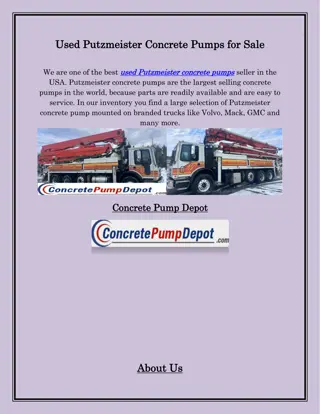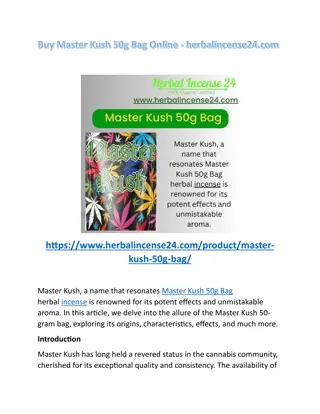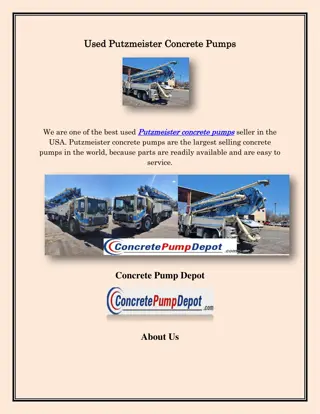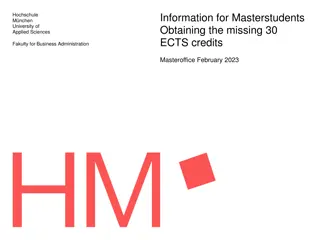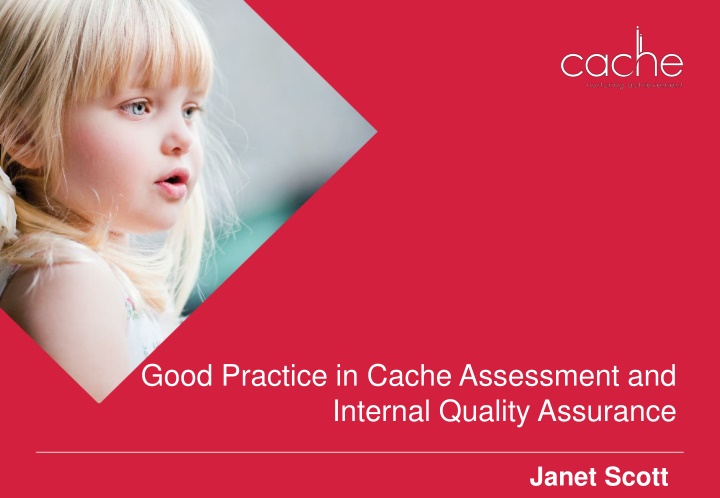
Cache Assessment and Internal Quality Assurance Methods
Explore the importance of cache assessment and internal quality assurance through learner assessment, assessor roles, holistic approach, and feedback mechanisms. Discover the significance of qualified assessors and the delicate nature of providing feedback to learners.
Download Presentation

Please find below an Image/Link to download the presentation.
The content on the website is provided AS IS for your information and personal use only. It may not be sold, licensed, or shared on other websites without obtaining consent from the author. If you encounter any issues during the download, it is possible that the publisher has removed the file from their server.
You are allowed to download the files provided on this website for personal or commercial use, subject to the condition that they are used lawfully. All files are the property of their respective owners.
The content on the website is provided AS IS for your information and personal use only. It may not be sold, licensed, or shared on other websites without obtaining consent from the author.
E N D
Presentation Transcript
Good Practice in Cache Assessment and Internal Quality Assurance Janet Scott
Assessment Practice
Learners Tutors/Trainers Assessors What is the purpose of assessment? Organisations Employers Why do we assess learners? To determine competence in skills and knowledge To find out their learning needs To identify learning styles To check their learning To find out what they already know
Assess learner to meet qualification specification learning outcomes High expectations - meet assessment criteria Record evidence and make assessment judgement What is the role of an assessor? Rigorous in checking the evidence Plan assessment and give feedback Safeguard the integrity of the qualification Manage information relating to assessment Support learners
Activity 1 Assessment
Holistic IQA All assessors All asst methods All levels Overlapping content in quals Efficient assessment of learners Holistic Approach Covers skills in competence and knowledge Holistic assessment Holistic assessment methods
Theme Theme Theme Theme Diamond Moments Theme Theme Theme Theme
Assessors should Be appropriately qualified according to Sector Skills/Awarding organisation requirements show demonstable CPD be occupationally competent
The flowers represent the feedback which must be given to learners (by assessor) or assessors (by IQA) and some times has to be handled very carefully Assessing is like a vase of flowers! The stems represent planning the assessment of qualifications The leaves represent the various assessment methods
ASSESSMENT METHODS Direct Observation A Professional discussion B Expert Witness & (Verbal WT) C Learner work products D learner logs Reflective diaries E Activity Plans F Recognition of prior learning I Observations of children or adults G Portfolio evidence H Reflective accounts J Written and pictorial evidence K Oral Case Studies L Cache written tasks M questions and answers N
Linking conceptual knowledge and competency applications I know all about it but........ I can do it but....... Am I competent to do it? Do I know why I do it and understand it
Activity 2 Giving feedback
What is the role of the Internal Quality assurer? Q_______________ U_______________ A_______________ L_______________ I _______________ T_______________ Y_______________ A_______________ S_______________ S_______________ U_______________ R_______________ A_______________ N_______________ C_______________ E_______________
Q - Quality U - Updating role A - Assurance - monitoring L - Liaison and support role I - IQAing IQAs T - Team meetings Y - You A - Audit trails S - Standardisation S - Sampling U - ULN/PIN numbers R - RAG rating A - Assessors N - New IQAs C Complaints and appeals E - External quality assurance
Ensuring fair IQA practice avoid .. Ensuring fair IQA practice avoid avoid Benefit of the doubt Halo/horns effect Over assessing that will do Stereotyping First impressions Not Similar to me understanding the assessment criteria Comparisons Crediting nice people.
Activity 3 Terminology and ensuring evidence is assessed at the correct level
IQA Strategy Personalised sampling plans for each assessor Sampling all assessors all methods, and all levels Sampling plans & assessment decisions - audit trail Standardisation Record keeping Actions set & checked
Quality Assurance in the assessment process . recap The IQA focus is a to sample: ALL assessors ALL assessment methods All levels of units within the qualification S- selection of portfolios according to sampling plan A - assessors RAG rating for sampling quantity M - methods of assessing P - planning/feedback and plagiarism L - levels within qualification E - engagement with assessors
Is the evidence SUFFICIENT ? Is the evidence AUTHENTIC ? Is the evidence CURRENT? Checking evidence and assessor judgements Are the judgements by assessors VALID? Are the judgements by assessors RELIABLE? Are the judgements by assessors FAIR? Observing in parallel with unconfident assessors Observing assessing practice Interview learners Monitoring assessor practice Observing planning and feedback to learners Attendance at meetings and following up Sampling learner work with assessor present
Enable assessors and internal quality assurers to refine their practice Develop confidence in confirming assessment judgements Why Standardise Assessment ? Forum for assessor and IQAs to be able to raise concerns and agree the way forward Confirm good practice and identify areas that are lacking and need to be addressed.
Activity 4 IQA
Role of the Lead IQA The LLUK (now LSIS) qualifications for assuring the quality of assessment expect lead internal quality assurers to do all that is expected of an internal quality Assurer plus: Be able to produce a work plan for own area of responsibility; Be able to allocate and agree responsibilities with team members; Be able to monitor the progress and quality of work in own area of responsibility and provide feedback; Be able to review and amend plans of work for own area of responsibility and communicate changes. Accountability for Quality Assurance at the Centre The Centre must identify a named individual with accountability for quality assurance at the Centre. This could be the lead quality assurer but does not have to be. They will ensure the effective management of the internal quality system for CACHE QCF qualifications within the Centre.
EQA Lead IQA IQA IQA IQA Assessor Team Assessor Team Assessor Team Learners Learners Learners Teams could be based on vocational areas, or geographical areas?
Moving Forward..... In groups consider: What actions are you going to do next? What are the timelines? What will you need to help you? Who will you need to help you?







